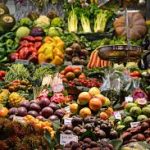
The 21st century has been identified by increased technological advancements as well as improved living standards. But then despite this advancements, the issue of food security is still a menace and has not been fully solved, particularly in third world nations. This short essay shall therefore scrutinize the reasons, suggest solutions as well as evaluate the outcome to the international food supply menace.
There can be two major reasons attributed to this, first is the disparity between the supply of food and the food available to feed the rapidly growing population. As per the Royal society, it should reach an optimum of nine million come 2050. To provide reliable answers to this issue, feasible measures must be immediately effected. Due to the rising global population and the increase in environmental issues like acid rain and global warming, international supplies of food go through many shortcomings in feeding masses of people particularly those in economically capable regions wasting food. A set of issues emanating from shortages in supply of food such as land competition, energy and water also do exist.
Changes in climate is also another major significant issue which has led to regional disparities in the supply of food. Hence, in those regions that do not have adequate conditions for farming, food is a very crucial component. Globalization of trade via exchanged advantaged commodities between countries that are developed and those that are still developing could also lead to equivocal sharing of resources. The issue of global food supply is not only a matter that is happening at the moment since many more are bound to come. A bigger population indicates that human beings require a larger space to reside in, more drinking water as well as facilities to sustain livelihood, the ecosystem is also tempered with by these human beings as they look for survival. Various species which are important are degraded as animals causing diseases and insects that are harmful increase. One biggest challenge for the coming generations is how to improve production with scarce land, energy and water.
One valuable measure is to increase the food production so as to meet the needs of the growing population. This could be achieved through use of modern technologies. A few years back, genetically modified food products such as crops factor in relatively easy manipulations, has spread to several regions of the world. This biotechnology might better the yield of food as well as bringing in the issue of its sustainability.
The other solution is to reduce the amounts of wasted food. As for countries that are already well developed increasing the prices of food products and campaigning for balanced diets are feasible measures for discouraging wastage of food. Looking at the conditions of living in countries that are developing, governments ought to invest more in modern infrastructure in a bid to bring down the losses in distribution of food. As per Food and agriculture organization, close to one third of produced cereals is used to feed animals globally. This suggests that lots of food is wasted. Implying that in case these cereals are transformed into food for the hunger stricken areas then the issue of food supply could be handled to some point.
The other solution that is urgently required is the regulation of price volatilities, which has a specific negative effect on the less privileged members of the society and who majorly spent a huge percentage of their income on food products. By the year 2009, the Food and agriculture organization approximated that the rise in prices of food from 2007 to 2008 left close to one billion persons undernourished. It is thus important to do away with this issue through pinning down on monetary speculations, probably by enforcing restrictions on positions and prices together with limitations on passive speculations.
National food reserves to some point also should be put up. They enable aid be provided to those at risk as well as making it easier to curb the impact of price volatilities. Structures should be established at the national, local and regional levels, despite the fact that issues such as price volatilities are easier to regulate at regional levels as opposed to regulating them from the national levels.
Since providing food security within a specific nation or region could be a long detailed out procedure together with stipulations already highlighted above, it is important to take advantage of systems of social protection which act as security nets in times of crisis. These security nets might comprise of nutritional products such as micronutrients in the structure of food additions or monetary components like financial transfers. Financial transfers might, through doing away with barriers economically allow the population reliable access to sufficient nutritional diets. With regard to protection, a few economies that are coming up have summed up enough experience and could assume the responsibility of assisting developing nations make sure of a proper social protection mechanism.
In a moment when the amount of natural disasters are increasing. It is also necessary to reinforce the power of the persons affected by climatic conditions changes so as to be able to respond to fresh conditions through support measures destined at assisting the adapt to the new environments. In line with these structures but on a broader dimension, governments should commit themselves fully to fighting issues of climate change. There is no logic in improving the level of food production if the people cannot minimize the amount of the rampant natural calamities which frequently destroy crops.



